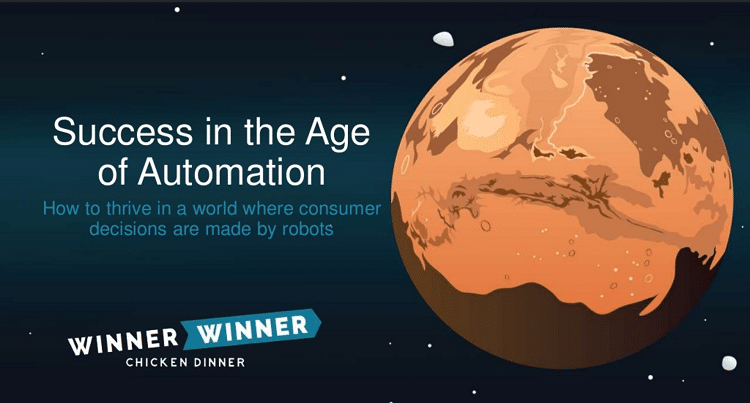
Success in the Age of Automation
Video
Slide Deck
About the Talk
This talk was originally given at Interactive Strategies 2017 in Houston, TX on September 14th, 2017 and is a follow up to my 2016 talk “Search in the Age of Automation”.
On the internet we tend to see one website / app / service dominate a category. Some of these dominating companies are pursuing a future form that change what they are, how they work, and how they impact the marketing of businesses. These are known as Walled Gardens and 3 major ones threaten the openness of the world wide web and the future of the internet.
- Google is not a search engine.
- Facebook is not a social media website.
- Amazon is not an ecommerce store.
All 3 are data mining engines mining various types of data from humans / consumers and other sources to help businesses be successful with advertising, ecommerce, or lead generation.
These three and potentially a few dozen others (from social media sites like Pinterest to software companies like Real Page) seek to leverage massive stores of data on consumer behavior and to use that to become the gatekeepers of what content / products / services those consumers see online.
Google is doing this by developing more and more vertical search portals, expanding how businesses can feed information right into Google, scraping web content with Schema.org and displaying it so as to cut off down stream click traffic to websites, and pushing organic listings out of view of consumers with more ads and ever-expanding white space between listed items.
Facebook is doing this by mining demographic and psychographic data consumers volunteer and mining the forms of communications those users utilize within Facebook’s garden (i.e. Instagram, WhatsApp, Messenger).
Amazon appears to be more poised to position themselves as the data mining engine product creators can use to be successful in retail, eliminating the need for wholesale and the role traditional retail stores play in bringing a new product to market.
In this world marketers will need to influence an ever growing number of walled gardens with an ever increasing amount of proprietary processes in lieu of the open web’s standards; and they will need to do so in a way that impacts each walled garden simultaneously with messaging both catered to the expectations of users within each walled garden and uniform in its meaning and purpose.
One possible way to do this is to begin being innovators. Marketers must invest in innovative products, research, concepts, systems, processes, and content to break through the walls of each garden if they wish to thrive in the world that will dominate the next decade of the internet.
In this talk I refer to one specific tactic of innovation marketing as “Building a Batman”. A Batman is the perfect future form of a business that may not be currently possible to build but would require a variety of new things to be created in order to be viable.
Building a Batman is a difficult and costly undertaking that requires precise timing, massive volumes of highly intellectual labor, and the will to kill off the current business model. As such this is out of reach for most every business in the world even some large tech companies. In these cases the next best thing is a Space Dive.
A Space Dive is a marketing campaign that can do at least 3 of these 4 things: Get news media coverage (traditional & digital), Drive high volumes of conversations on social media (social media marketing), Gain a high volume of natural links and new linking websites (seo), Set the stage for future marketing, advertising, PR, and business development (other marketing).
Red Bull, Amazon, and SpaceX have successfully pulled off Space Dive campaigns since 2012 but there are few other examples. Facebook’s attempt (Phone) failed miserably, Google Glass and other attempts by Google fell flat even though they were often considered highly successful PR campaigns. Microsoft’s voice search on Xbox One (2013) left the company and brand reeling for years even though voice search is now considered one of the top ways consumers find information and access their devices.